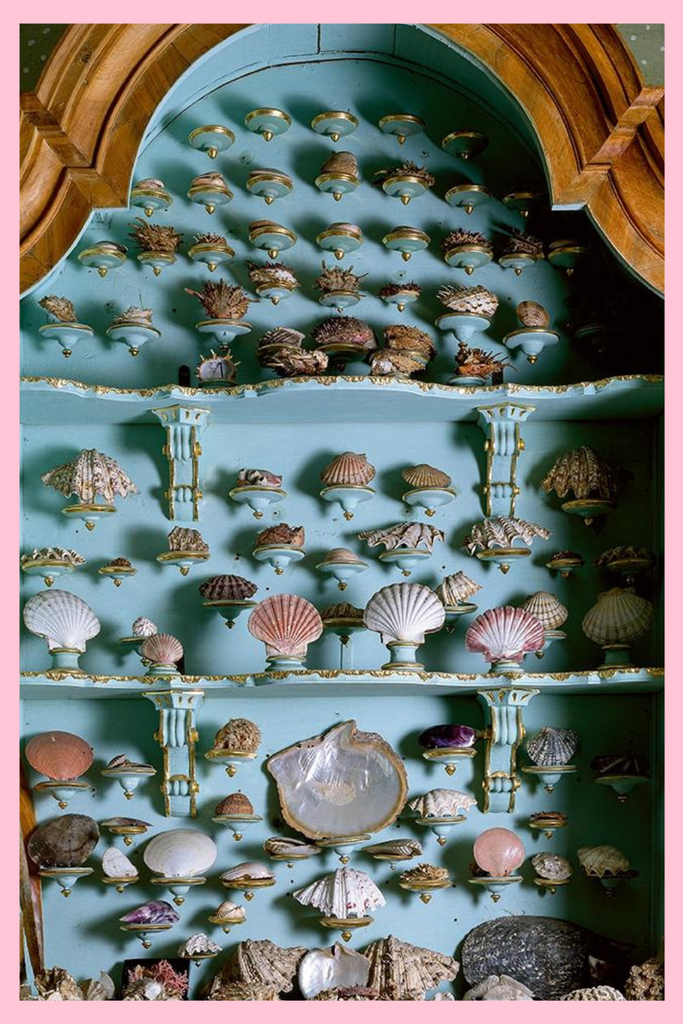Cabinet of Curiosities

Have you ever heard of a Wunderkammer or thought about how it might be incorporated into your decor? Wunderkammer, which translates to mean “wonder chamber” and often referred to as Cabinet of Curiosities, became popular during the Renaissance period - especially among European aristocrats and royal families.

Ferrante Imperato, Dell'Historia Naturale (1599), the earliest illustration of a natural history cabinet - Picture from Sotheby’s Institute of Art

Oceanic Inspired Room of Curiosities - Picture from Taschen

Oceanic Inspired Cabinet of Curiosities - Picture from Taschen
During this time period, people were thirsty for knowledge and embraced exploration and experimentation; in particular, they were intrigued by the natural world and prioritized the acquisition of knowledge and understanding of the world around them.

Domenico Remps, Cabinet of Curiosities (c. 1690) - Picture from This Is Colossal
There was so much left to be discovered - it was a mystery that both fascinated and inspired them to create collections in their homes. These collections served as talking pieces when entertaining guests, as well as a means to showcase one’s wealth and cultural prowess. Collections usually started out small and were kept in a box or bowl, then as they grew would require a cabinet to showcase them and in some cases, would eventually grow to the size of an entire room. Depending on the size of these collections, they included things such as: stones, shells, books, feathers, religious artifacts, sharks teeth, coins, taxidermy, coral, gemstones, art, sculptures, preserved insects such as butterflies, and dried botanicals including flowers, twigs and leaves.

Frans Francken the Younger, Chamber of Art and Curiosities, 1636 - Picture from Sotheby’s Institute of Art
These personal collections laid the groundwork for modern day museums and played an important role in the educational philosophy of that time period. The Boys’ School at Old Salem in Winston-Salem, NC showcases a beautiful example of a “room” of curiosities which was utilized to educate the children in their Moravian village. The term "curio cabinet" is rooted is this same history.

Old Salem Museums & Gardens (Boys’ School) - Picture from Old Salem Museums & Gardens

Old Salem Museums & Gardens (Boys’ School - Room of Curiosities) - Picture from BEECK Mineral Paints

Old Salem Museums & Gardens (Boys’ School - Cabinet of Curiosities) - Picture from BEECK Mineral Paints
In design, I think it is always a good idea to glean from the past - that is one of the fundamentals in creating a timeless, collected home. In doing so, I love to incorporate a “Bowl of Curiosities” on my coffee table or bookshelf. In it, I keep little trinkets that hold meaning for me - it almost serves as a living scrapbook displayed among the coffee table books and inspires good conversation. In my collection, I have feathers, birds’ nests, shells & stones that I have collected from trips or during nature walks; a piece of driftwood on which my grandfather wrote a sweet note during one of our family beach vacations; a jingle from a Native American jingle dress that I acquired while I was studying about Native American culture & history; my grandmother’s sewing thimble; coins from my father’s childhood collection; a cork from mine and my husband’s vineyard wedding; a couple of handmade civil war bullets that were found while visiting a historic property; the key to mine and my husband’s first home together, among other things.

If you have any artifacts, trinkets or keepsakes lying around and aren’t sure what to do with them, maybe consider putting together your own little bowl of curiosities. It’s a perfect way to add a collected element in your home.
For more inspiration, Taschen has a book entitled, “Massimo Listri Cabinet of Curiosities” that is available for purchase on their website.



Leave a comment